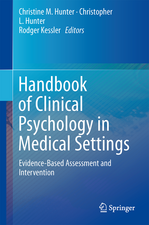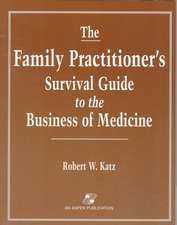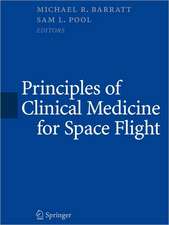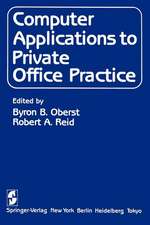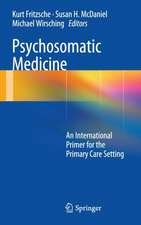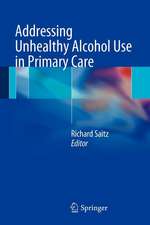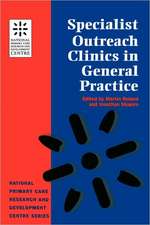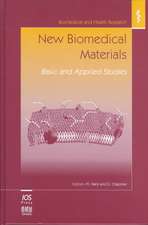Post-Traumatic Stress Disorder: A Guide for Primary Care Clinicians and Therapists
Autor J.F. Pagelen Limba Engleză Paperback – 23 sep 2020
There are treatments for PTSD that work, and many that do not. This book presents evidence, rather than theory, anecdote, or case report. Psychological approaches including prolonged exposure, imagery rehearsal therapy and EMDR have a greater than 75% positive short-term response when used to treat PTSD. Yet these treatments vary markedlyand have different, even contradictory underlying theory and objectives for treatment. Medications, rarely indicated as primary therapy, can be used to treat symptoms and address comorbid PTSD diagnoses. Treatment of sleep apnea in the PTSD population produces a positive effect on symptoms and a reduction in morbidity and mortality across the span of life. Complementary treatments offer the many individuals chronically affected by PTSD assistance in coping with symptoms and opportunities to attempt to functionally integrate their experience of trauma.
Preț: 297.78 lei
Preț vechi: 313.46 lei
-5% Nou
Puncte Express: 447
Preț estimativ în valută:
56.100€ • 61.93$ • 47.91£
56.100€ • 61.93$ • 47.91£
Carte tipărită la comandă
Livrare economică 17-23 aprilie
Preluare comenzi: 021 569.72.76
Specificații
ISBN-13: 9783030559083
ISBN-10: 3030559084
Pagini: 165
Ilustrații: XIII, 165 p. 17 illus., 6 illus. in color.
Dimensiuni: 155 x 235 mm
Greutate: 0.23 kg
Ediția:1st ed. 2021
Editura: Springer International Publishing
Colecția Springer
Locul publicării:Cham, Switzerland
ISBN-10: 3030559084
Pagini: 165
Ilustrații: XIII, 165 p. 17 illus., 6 illus. in color.
Dimensiuni: 155 x 235 mm
Greutate: 0.23 kg
Ediția:1st ed. 2021
Editura: Springer International Publishing
Colecția Springer
Locul publicării:Cham, Switzerland
Cuprins
1 Shell shock and society.- 2 Unzipping ptsd - criteria and screeners.- 3 Disasters and societal trauma - complex and societal ptsd.- 4 The origins of ptsd - psychodynamic trauma and the human stress response.- 5 Nightmare science.- 6 Chronic ptsd.- 7 Treating the emergency - acute trauma.- 8 Classic psychotherapy for ptsd.- 9 Group therapy for ptsd.- 10 Classic cognitive behavioral therapy.- 11 Prolonged exposure therapy.- 12 Eye movement desensitization and processing (emdr).- 13 Imagery rehearsal therapy.- 14 Ptsd – the medications.- 15 Sleep apnea and ptsd.- 16 Complementary approaches to healing ptsd - art, body, and mind awareness.- 17 When treatment doesn't work.- 18 An evidence-based approach to ptsd therapy.
Notă biografică
James F. Pagel MS, MD
Associate Clinical Professor
University of Colorado
School of Medicine
Director Rocky Mt. Sleep
Pueblo, CO
Associate Clinical Professor
University of Colorado
School of Medicine
Director Rocky Mt. Sleep
Pueblo, CO
Textul de pe ultima copertă
PTSD is in no way an easy diagnosis for the patient, the provider, or the therapist. It is a diagnosis developed at the border of our capacity to handle extreme stress, a marker diagnosis denoting the limits of our capacity for functioning in the stress of this modern world. For both individuals and society, PTSD marks the limits of our available compassion and our capacity to protect ourselves from the dangers of the environment and other humans. PTSD is often a chronic disease, forming at a place where mind sometimes no longer equals the brain, a point at which individual patient requirements often trump theory and belief.
There are treatments for PTSD that work, and many that do not. This book presents evidence, rather than theory, anecdote, or case report. Psychological approaches including prolonged exposure, imagery rehearsal therapy and EMDR have a greater than 75% positive short-term response when used to treat PTSD. Yet these treatments vary markedly andhave different, even contradictory underlying theory and objectives for treatment. Medications, rarely indicated as primary therapy, can be used to treat symptoms and address comorbid PTSD diagnoses. Treatment of sleep apnea in the PTSD population produces a positive effect on symptoms and a reduction in morbidity and mortality across the span of life. Complementary treatments offer the many individuals chronically affected by PTSD assistance in coping with symptoms and opportunities to attempt to functionally integrate their experience of trauma.
There are treatments for PTSD that work, and many that do not. This book presents evidence, rather than theory, anecdote, or case report. Psychological approaches including prolonged exposure, imagery rehearsal therapy and EMDR have a greater than 75% positive short-term response when used to treat PTSD. Yet these treatments vary markedly andhave different, even contradictory underlying theory and objectives for treatment. Medications, rarely indicated as primary therapy, can be used to treat symptoms and address comorbid PTSD diagnoses. Treatment of sleep apnea in the PTSD population produces a positive effect on symptoms and a reduction in morbidity and mortality across the span of life. Complementary treatments offer the many individuals chronically affected by PTSD assistance in coping with symptoms and opportunities to attempt to functionally integrate their experience of trauma.
Caracteristici
Discusses the acute, and chronic effects of PTSD on personal and social functioning Reviews the origins of PTSD, treatment options and manifestations of the disorder Features evidence-based chapters written from the clinical perspective, and through the lens of PTSD from within the context of the experience of life-altering trauma

